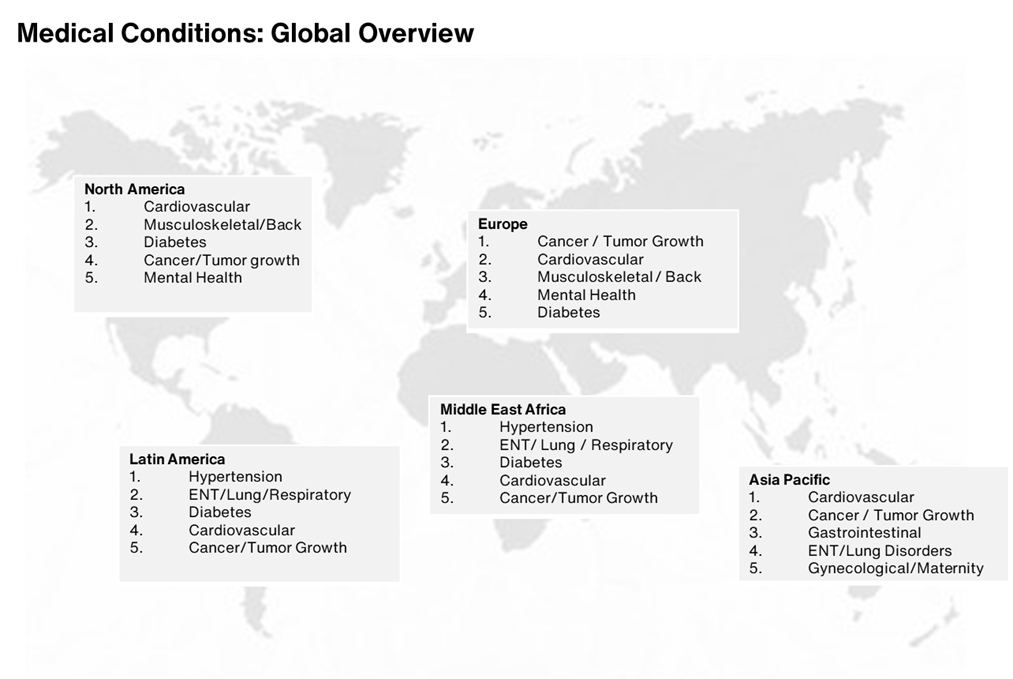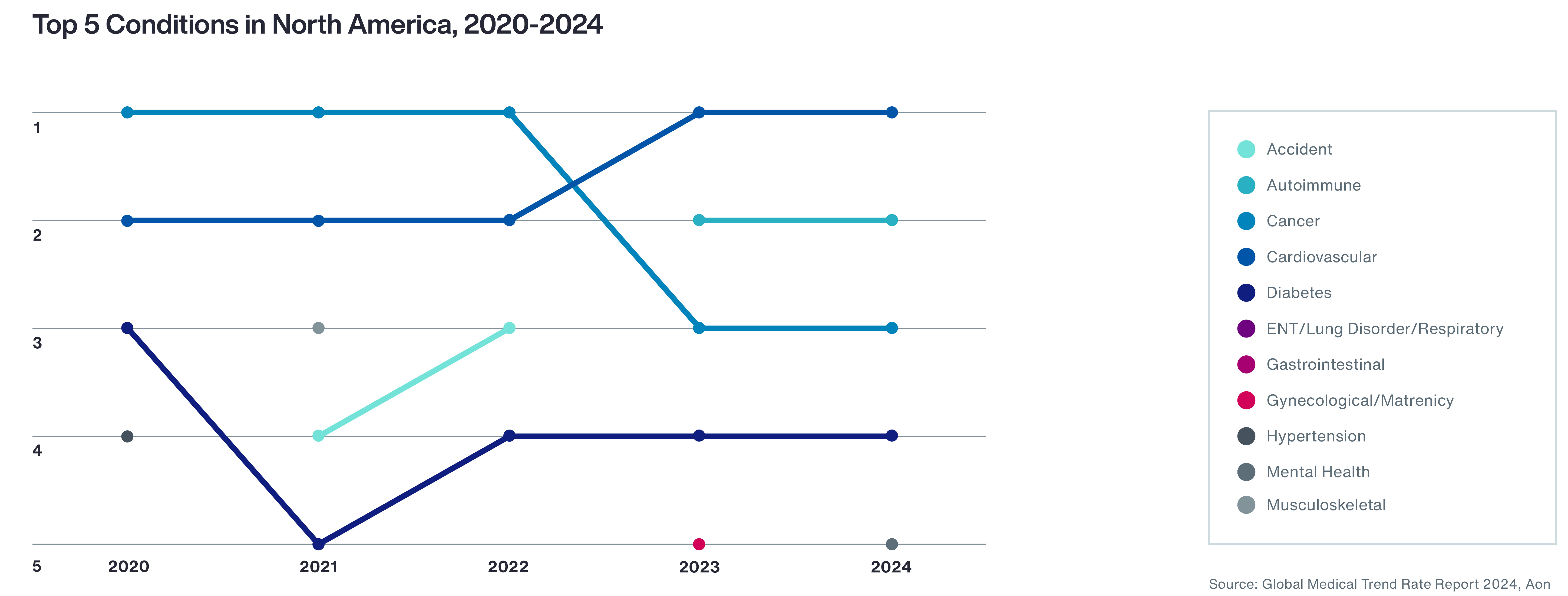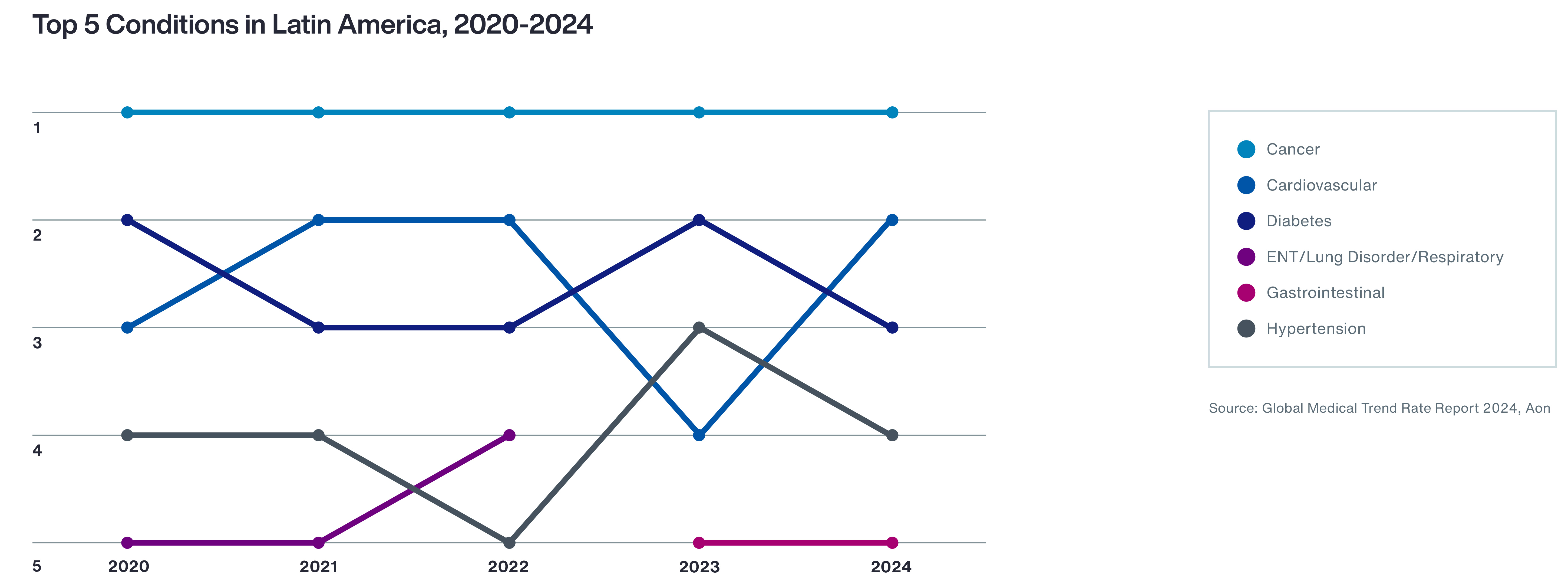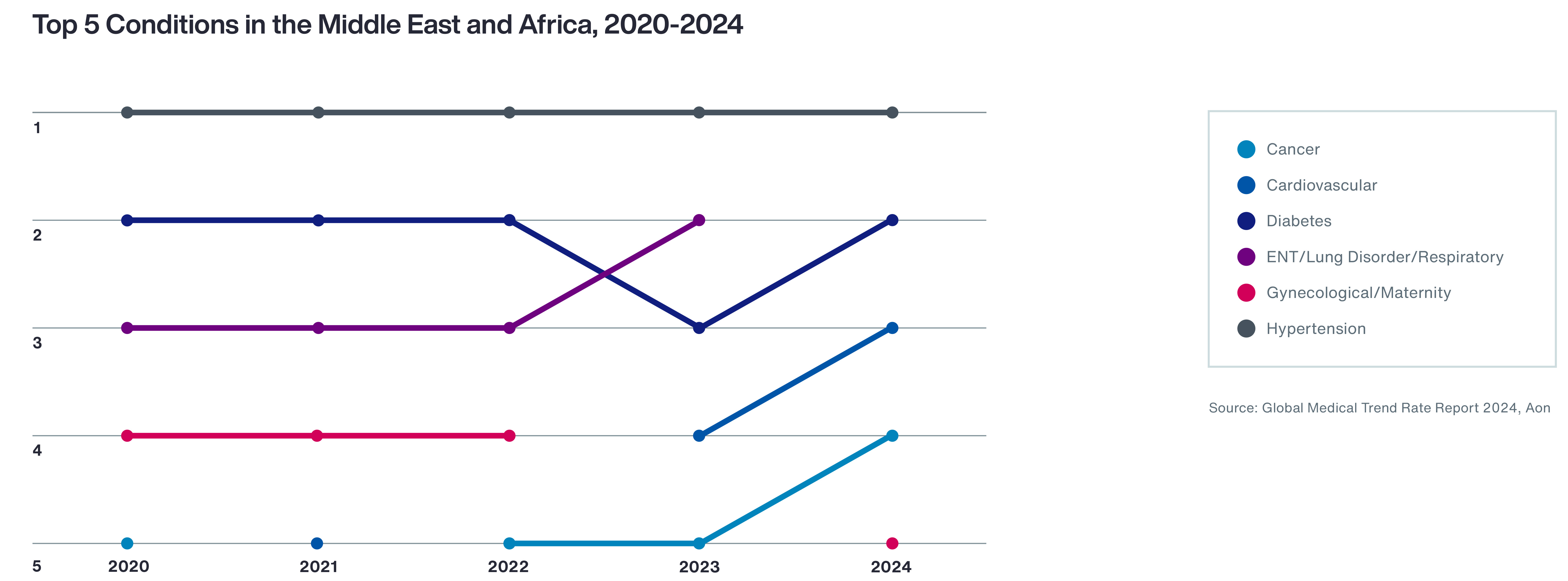Amid volatile economic conditions, including inflation and the lingering effects of the COVID-19 pandemic, companies budgeting for their medical plans were already expecting to pay more for their programs than in prior years. Part one of this series examined the risk factors behind the increase in costs, as revealed in Aon’s Global Medical Trend Rate report.
While those risk factors are all important, they do not tell the whole story. The medical conditions that drive claims are also key to understanding where and why the trend rate has risen.
Better Informed
Conditions Driving the Medical Trend Rate Stay Consistent
The top five conditions driving the medical trend rate higher have remained relatively consistent over the past few years, though the top two conditions — cancer and cardiovascular diseases — switched places for 2024. As with risk factors, that doesn’t mean these conditions are the only drivers of the medical trend rate, or that all of them are the same globally.
There is much that is not understood about the causes of cancer, apart from some behavioral triggers like smoking, making effective prevention a challenge. That’s one reason why cancer/tumor growth continues to be a major driver of claims. Successful cancer treatment often depends on early detection and timely intervention. Delays in these actions are associated with poorer prognosis, leading to higher treatment costs. Screenings, as well as interventions (surgery and radiation treatment), also require timely in-person interactions. Additionally, hindered access to care and delay in seeking care as a result of the pandemic are likely amplifying cancer treatment costs.
Cardiovascular issues include heart attacks and strokes. These are not only the most common conditions, but also usually the most expensive, given the urgent interventions needed to prevent long-term damage or death. Globally, more than 18 million people1 die from cardiovascular disease each year. High blood pressure, poor stress management, obesity, poor nutrition and lack of physical activity are all major risk factors for cardiovascular disease.
It is worth noting that hypertension shows up as both a risk factor and condition requiring treatment. A factor driving hypertension’s status as a top claim condition is the disparity in the cost of treatment drugs. These drugs can be up to 40 times as expensive depending on where they are sold.2
Diabetes is underdiscussed as a driver of claims. Patients with long-term diabetes can encounter complications in multiple systems, from neurological and gastrointestinal to vision and more. Medications used to treat diabetes — whether insulin, a drug used to help with the absorption of insulin or one used to treat a complication — generate huge amounts of claims thanks to the cost of the drugs and the ongoing nature of treatment. And while more than half a billion people are living with diagnosed cases of diabetes worldwide,3 it is likely still underdiagnosed.
It is noteworthy that obesity, as a comorbidity of diabetes and cardiovascular diseases, strongly influences prognosis and treatment outcomes of these conditions. Rising weight challenges across the globe, but especially in the U.S., continue to increase the burden of these diseases. Currently, obesity does not get enough attention in the context of claims costs, but with weight-reducing GLP1 drugs, this might soon change.
Finally, musculoskeletal/back issues continue to be a top source of claims. These conditions are inherent to sedentary lifestyles, stress, and are expensive to address, often requiring long-term treatment.

Regional Perspectives

















































































































































































































































































































































































